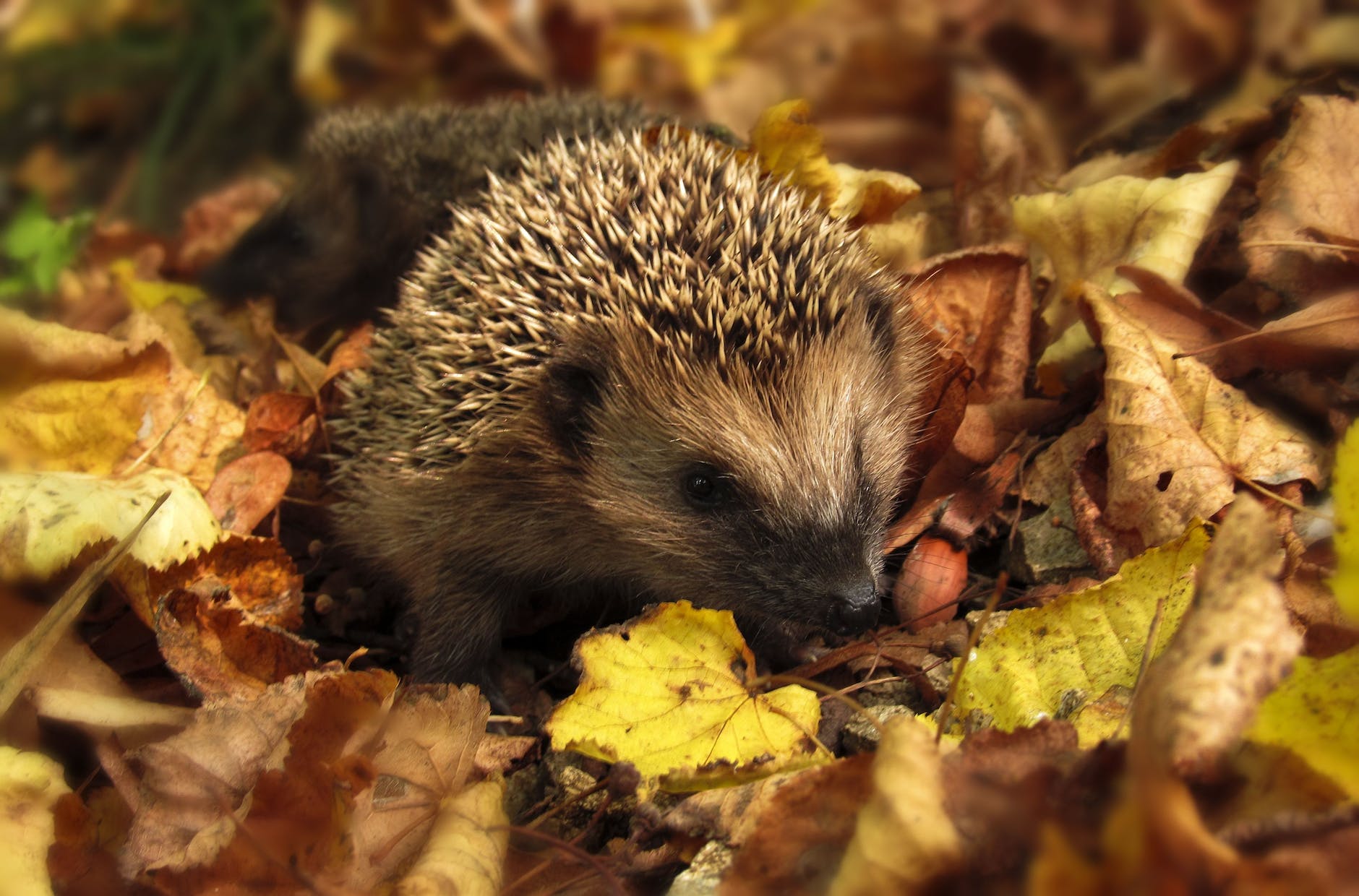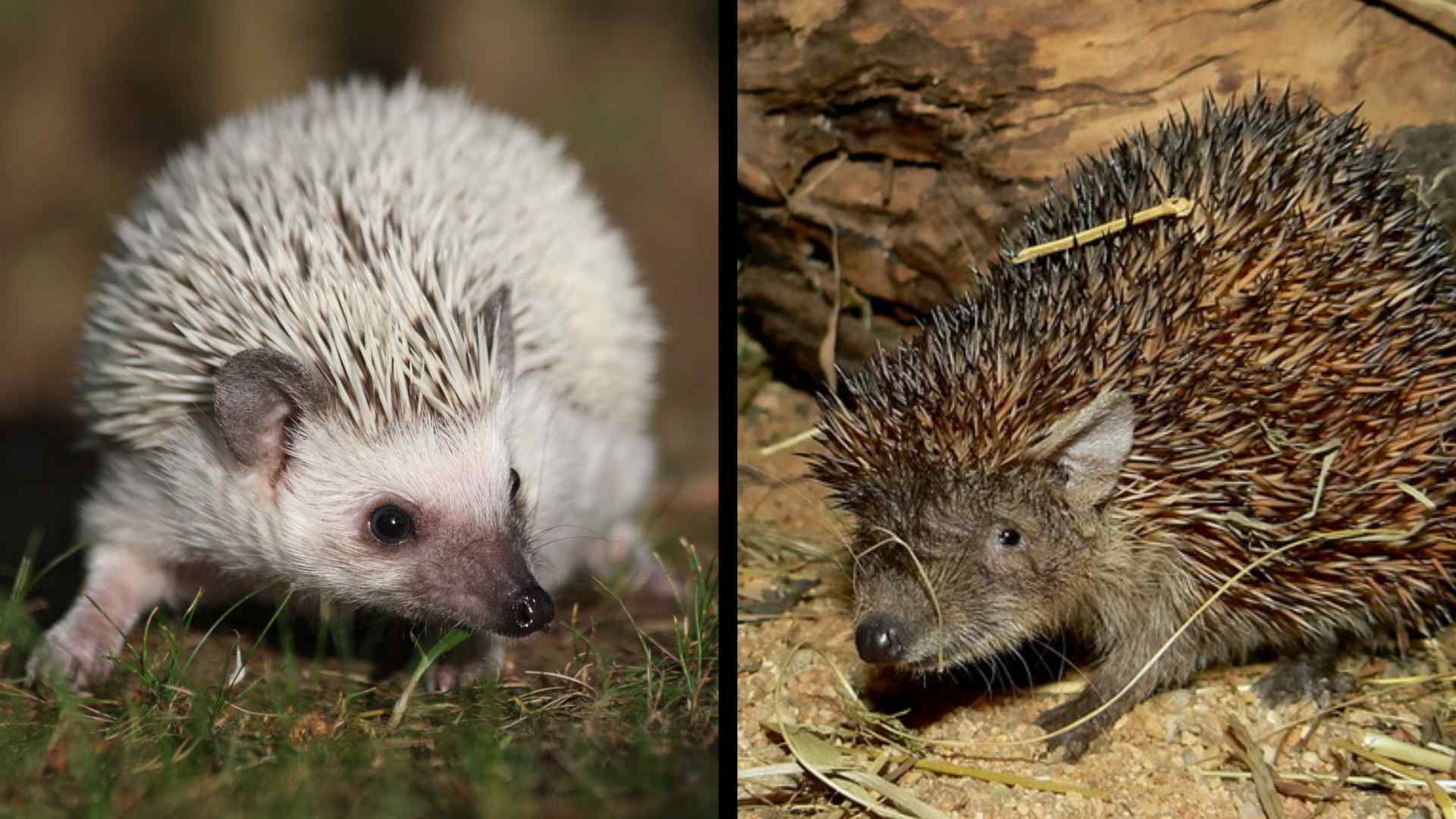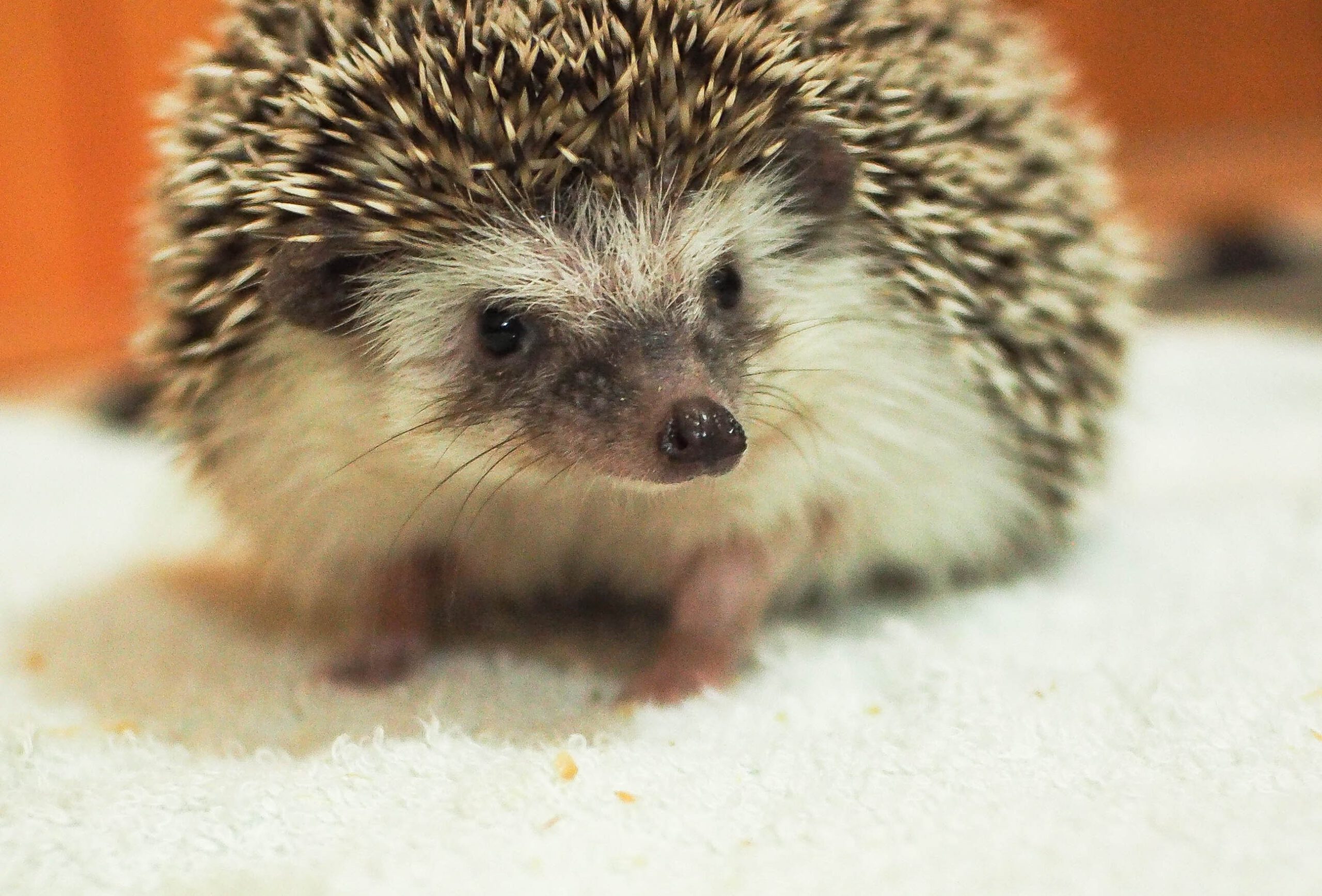A long winters nap
Suddenly it’s November and the seasons are changing in Europe. Winter is coming.. And hedgehogs are desperately searching for food to gain weight for hibernation. But why do hedgehogs go into hibernation and how do they do it?
Hedgehogs through the seasons
Hedgehogs are very seasonal animals that hold a strict routine every single year. Through weather might throw their routine off slightly, the usual pattern is very clear: breeding in summer, eating in fall, sleeping through winter and again eating in spring.
Summer
The mating season of hedgehogs lasts from May to August, with most young begin born between June and October. Upon birth, young hedgehogs are completely naked, blind and deaf. After a few hours, white quills appear and slowly in the weeks following, those small white quills are replaced by stirdier brown quills. Hedgehogs continue to shed their quills throughout their lives: they fall out and new ones grow in their place. After roughly six weeks, the young hedgehogs venture out on their own, but they hibernate in the nest they were born at. The mother hedgehogs often hibernates in a diferent nest after the young have become fully independant.
Fall
When the weather changes and it becomes fall, hedgehogs desperately forage for food to prepare for hibernation. They’ll eat everything they can possibly find: snails, earthworms, fruits, mushrooms, but also unfortunately any edible human food. That sometimes puts them in big trouble! At the end of fall, they have put on so much fat that they’ll easily last through winter, when food is scarse. Some young hedgehogs, especially those born late in summer, may have some issue gaining weight as they might not be fully independent just yet.
Winter
As soon as the weather gets too cold and food gets too scarse to survive, hedgehogs look for a quiet and safe place to hibernate through winter. Contrary to what people often beleive, hedgehogs don’t sleep all through winter; in mild winters they often times wake up in between their deep sleep to forage for leftover food that might still be sparsely available. But during a harsh freezing winter, they prefer to stay asleep and their fat reserves will last them all through this season.
Spring
When after a long, cold winter, hedgehogs begin to wake up. This usually happens in March or April and they wake up incredibly hungry! The first thing on a hedgehog’s mind is food: beetles, catterpillars, snails, worms and occasionally young birds, eggs or frogs. They’re not picky during this season; as long as it’s fleshy! Hedgehogs are nocturnal animals, which means they hunt during the nights. They’re also creatures of habit, meaning they’ll often walk the same routes during these nights if they catch enough food during the route.
Eating, eating, eating
As you’ve read, hedgehogs love to eat, and they eat a lot too! They prefer anything fleshy, like insects and small prey animals, but they’ll eat anything that they can possibly find during their nightly raids. Most people think that hedgehogs are insectivores because of their preferences, but they are actually opportunistic insect eaters, and thus.. omnivorous! If they can manage to find insects, they’ll much prefer those, but anything edible is eaten by hedgehogs. Which is why they are such amazing animals to welcome into your garden. Hedgehogs will certainly help you get rid of snails and any other unwelcome pests: beetles, earthworms, snails, slugs, mice, young birds, frogs and toads.. Due to their mild resistance to poison, they’ll eat it all!
This trait of hedgehogs however can also get them into big trouble, especially in the city. People often times leave out empty containers from leftover food, which hedgehogs smell and want to try out. Sometimes with the unfortunate outcome of getting stuck in the containers. This is why McDonalds decided to redesign the plastic caps on McFlurries, after multiple hedgehogs were repoted to get stuck in them after people left the containers outside garbage cans. So be mindful next time you want to throw away that empy container and put it safely in a garbage bin.

Building a safe winters nest
In fall, hedgehogs are preparing for their hibernation and are actively searching for a safe and quiet place to go into their deep sleep. Often times they end up in piles of leaves that are raked up by humans, in very densly growing bushes, within a hollow tree stump, in abandoned nests of other animals or even under a pile of rocks if there’s enough space for them. They’ll decorate they nests with twigs, hay and leaves for isolation. If you ever come across a hedgehog in fall at night, they might have some leaves or grass in their mouths that they’re dragging to their nest! They need a lot of it, so if you want to help them out, you can do that simply by not throwing away those raked up leaves. Leave them in a nice big pile and let nature take care of it. That also helps birds, insects and even reptiles and amphibians in your area.
Slow and steady… and sleeping
While hedgehogs are building a nest in preperation for winter, they also are desperately hunting and foraging for food to gain as much weight and fat for their hibernation. Desperately, because as soon as the weather gets colder, insects and other food sources will disappear and the hedgehog won’t have enough food anymore to survive on. In reaction to the limiting food, their body slows down as a natural response. Over the span of a few weeks, they’ll get very sleepy and very slow. And at a certain point when it’s too cold outside and no food is available anymore, they’ll settle into their nests for the coming season. They go to sleep, their heart rate slows down and their body temperature drops as blood doesn’t flow enough anymore to keep them warm. Only the most imporant organs to keep the hedgehog alive (heart, lungs and brain) stay active enough to survive. The rest just stops. And the hedgehog is now in hibernation until the weather turns again and spring begins…
Hedgehogs in need
Unfortunately not every hedgehog is healthy enough to get into hibernation. When hedgehogs are ill, underweight or wounded, they often times have a hard time surviving and usually won’t survive through winter unless they get help. Luckily, there are a lot of rescues for hedgehogs that can help them get healthy again and often times release them back into the wild.
Video by Beth Campsill from Castleford Hedgehogs.
Helping hedgehogs
If you want to help hedgehogs, there are a lot of things you can do. Here’s some tips:
- Make a messy corner in your garden: In autumn, sweep leaves and branches into a corner of the garden and make a pile of them under a hedge or bush. This way you create a sheltered place for hedgehogs. A place where they can hibernate and sleep during the day during other seasons. Hedgehogs also like to hide in a compost heap or a pile of tree trunks for their daily nap and hibernation. In winter, decomposition in the compost heap continues as usual. That makes it a nice place for hedgehogs, because heat is released through digestion. Tip: be careful when turning the compost heap. Maybe there’s a hedgehog!
- Plant more plants: If you want hedgehogs in your garden, get as many as possible variation in your garden. Furthermore, hedgehogs do not like tiles for the simple reason that there is no food there. Where possible, remove tiles from your garden and replace them by something green. Plant plants and shrubs in your garden belong in Dutch nature, the so-called native species. These species attract the most insects, which in turn are food for hedgehogs. And also for many birds and other animals. To leaf through that fall from these trees and shrubs, you can leave. Many insects are also attracted to this.
- Make a vegetable garden: Plant a vegetable garden and your hedgehogs will have a great time pleasure. Not because they are made of lettuce, zucchini or other vegetables, but because a vegetable garden has a lot attracts snails. And hedgehogs love snails, they eat up to 40 per night! A perfect distribution: they the snails, you the vegetables!
- Create a hedgehog highway: Hedgehogs travel one to two kilometers per night. So they need several gardens to get enough to find food. All those fences make them forced to walk along the road, with all its dangers of that. A hedgehog highway offers a solution. You create one by making a passage in the fence of 15×15 cm or dig a tunnel under your fence Through. Then hedgehogs can safely go from one to the other foraging in another garden. The more neighbors participate, the better. Please note: make sure the edges of the passage are smooth, then hedgehogs can pass through without a scratch. If you have a mesh boundary fence, work the edges with, for example, a piece of PVC pipe.
- Water, water, water: Animals need water, including hedgehogs. Help them quenching their thirst in a sheltered place place a bowl of water. Dont put in full sun, because then it has already dried before they have had a chance to drink it. And make sure the dish has a low edge, then they can reach it well. And again: never give hedgehogs milk, it gives them diarrhea. If you have the space, create a pond! Make sure that the bank of the pond or other water features gradually slope or, lay down a walkway so that hedgehogs can get there and easily climb out again.
- Turn off the robot lawn mower: Do you have a robotic lawnmower? Then please do not mow in the evening or at night. Then the hedgehogs leave their nests and forage and hunt for food. Your robot lawn mower may be a big risk to them and can injure them very badly.
Article by Judith Dunkirk.




